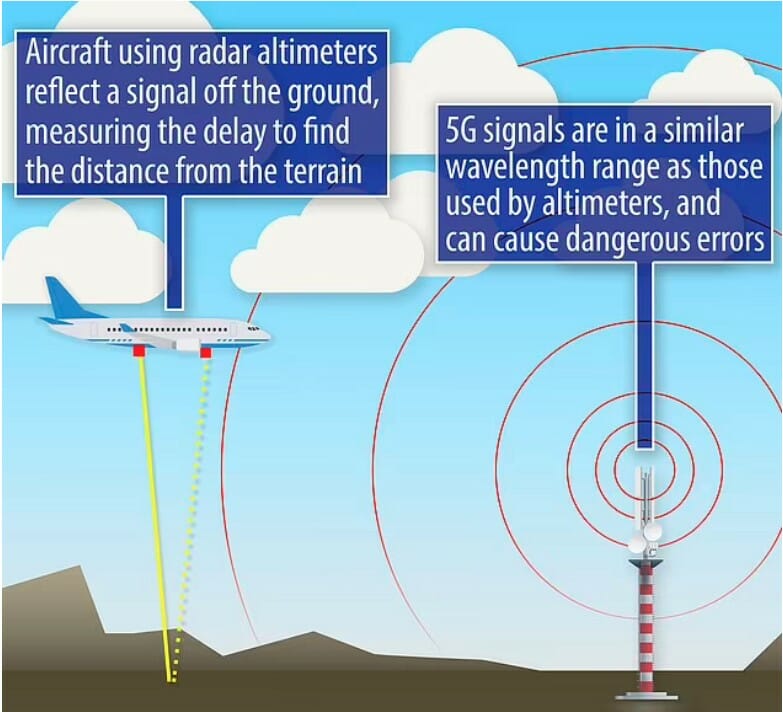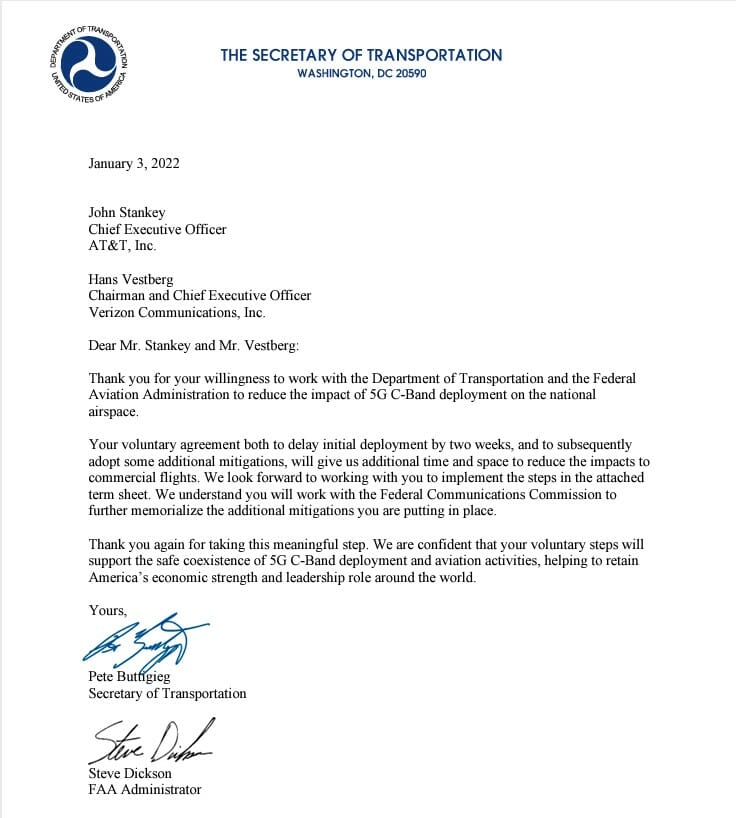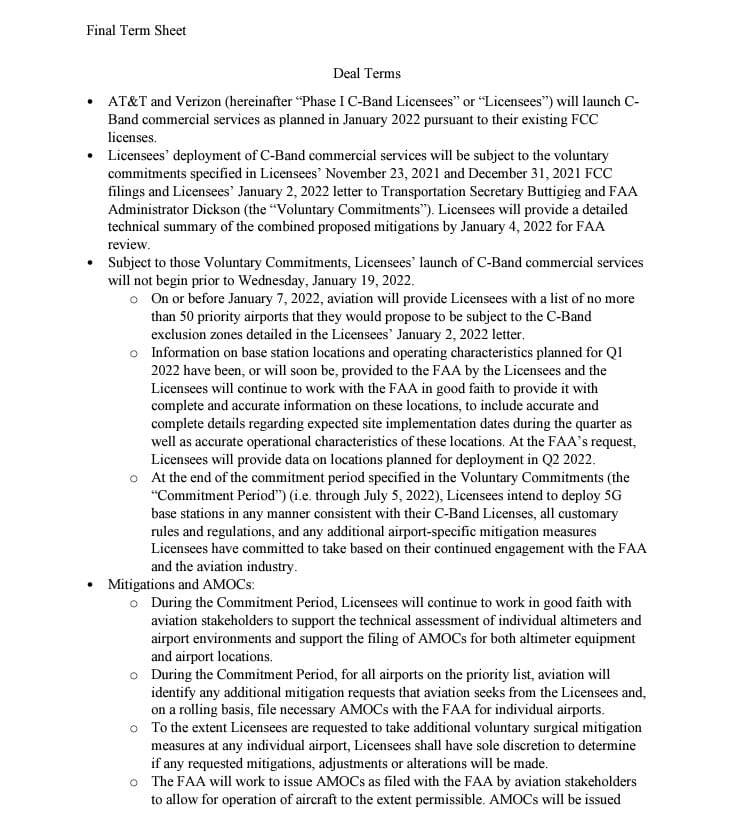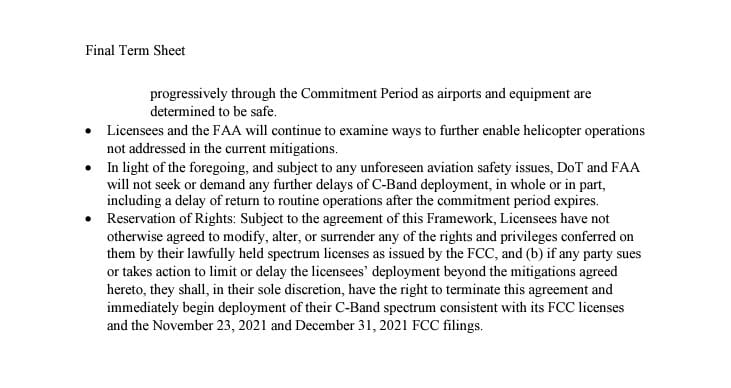Last week, I wrote how the rollout of AT&T and Verizon’s new C-Band, 5G service could interfere with aircraft radio altimeters. If you missed the original post, you can read it here so you will have the foundation of this updated story.
The Problem
AT&T and Verizon will be rolling their new 5G service using the new C-Band frequency spectrum. The new C-band used by AT&T and Verizon transmits on the upper-frequency spectrum from 3.7 – 4.2 Gigahertz (GHz). The radio altimeters used on airliners transmit on a frequency spectrum of 4.2 – 4.4 GHz. Radio altimeters are used by aircraft during the final approach phase of landing. These altimeters are used from altitudes from 2,500 feet above ground level to the runway. These altimeters are more precise than the barometric altimeters used during flight. There is no buffer spectrum separating the new upper C-band 5G frequencies from the aviation frequencies. These new 5G frequencies are scheduled for rollout on January 5, 2022. It is possible for spurious 5G signals that could conflict with the frequencies used for radio altimeters. If the impact is what airlines say, it could result in up to 1,000 flights per day either delayed or cancelled.
Radio altimeters make audible callouts at altitude intervals. There are two critical calls where the captain has to take action. There is a final landing decision point to be made, usually around 200 feet above the ground. The altimeter would call out 200 and the final decision is made to land or go around. If the pilot commits to landing, the captain will say “continue”. The other point is usually about 20 feet above the ground. The altimeter will say “retard, retard, retard”. At this point, the pilot flying will flare the aircraft (nose up) and cut the throttles
The C-band frequency spectrum that is used by T-Mobile is using middle-band frequencies so their 5G service is not at issue.
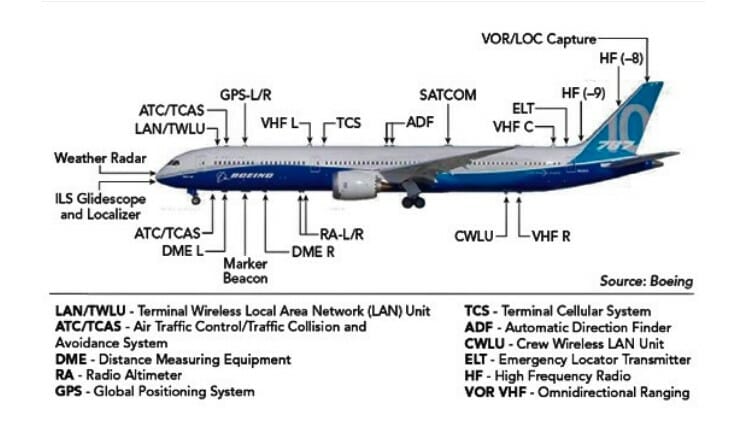
Europe Aviation and 5G
The new C-band cell phone service has been operating in Europe for months. The difference in Europe is that cell phone providers are using the middle frequencies of the C-Band spectrum. Using these lower radio frequencies allows a buffer between cell phone transmission and the radio altimeters used by aircraft. In France, cell phone towers near airports transmit at a lower power output. It is likely that in Europe, antenna design may be different to keep radio transmission on frequency to limit radio frequency bleed-over into the radio altimeter band.
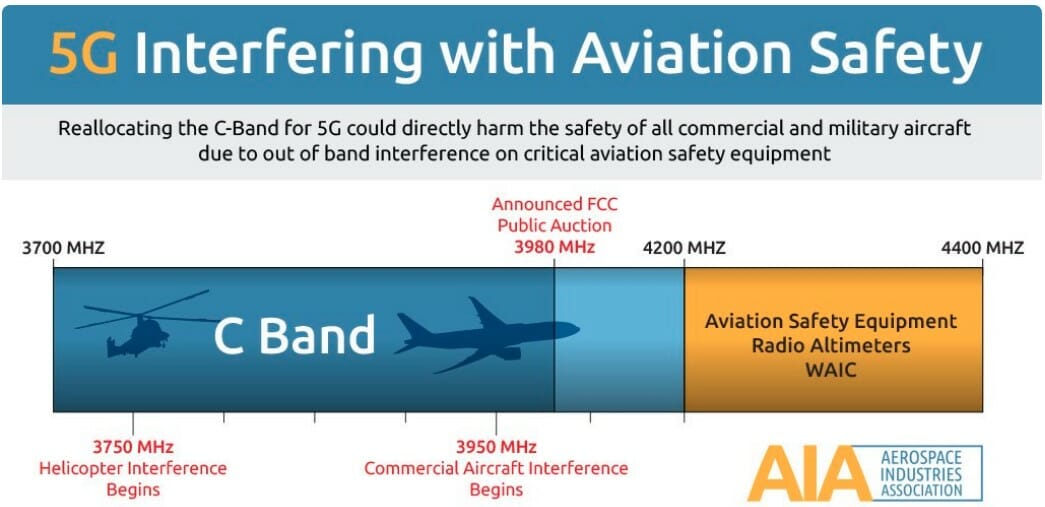
The Agreement With AT&T and Verizon
The two cell phone carriers have agreed to a further two-week startup delay. This will give the Federal Aviation Administration (FAA) time to determine an exclusion zone for up to 50 major airports in the U. S. At issue is the 3.7 to 3.98 GHz frequency, known as C-Band, that the two wireless carriers spent tens of billions licensing for use to power their ultra-fast 5G networks.
President Biden hailed the agreement by saying that the “‘a significant step in the right direction’ and expressed confidence that measures could be put in place to minimize disruptions to air travel before the new deadline”.
The FAA said: “Safety is the core of our mission and this guides all of our decisions.”
‘The FAA thanks AT&T and Verizon for agreeing to a voluntary delay and for their proposed mitigations. We look forward to using the additional time and space to reduce flight disruptions associated with this 5G deployment,” the agency added.
The FAA did not disclose the exact measures that they will take but it is expected to mirror the same mitigations for C-Band, 5G signals near airports in Europe. This may include lowering transmission power output and using antenna design to minimize signal “bleed-over” into the radio altimeter band.
Verizon Chief Executive Hans Vestberg told employees Tuesday in an email that it sees no aviation safety issue with 5G, but said the FAA “intended to disrupt an already difficult time for air travel if we move ahead with our planned activation.”
“We felt that it was the right thing to do for the flying public, which includes our customers and all of us, to give the FAA a little time to work out its issues with the aviation community,” he wrote.
In agreement with Transporation Secretary Pete Buttigieg and FAA Administrator Steve Dickson, they will not seek further delays beyond January 19, 2022 unless there are any “unforeseen aviation safety issues”.
Final Thoughts
C-Band, 5G cell service has peacefully coexisted with aviation in Europe for months. In the case of Europe, they have already addressed any bleed-over issues by assigning mid-band frequencies and limiting cell tower transmission power near airports.
In the U. S., T-Mobile is not involved in this controversy because their C-Band frequency allocation came from the mid-band frequencies. The agreement between the Department of Transportation, FAA, Verizon and AT&T should be able to mitigate any hazards that could affect aircraft radio altimeter performance.

